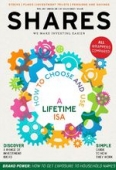Archived article
Please note that tax, investment, pension and ISA rules can change and the information and any views contained in this article may now be inaccurate.
Funds for all market conditions

Long/short funds consist of two separate components. There is the ‘long’ book that contains the holdings that the manager expects to deliver the most upside, and the ‘short’ book that consists of the shares that they think are most likely to fall in value.
Using derivatives such as CFDs allows the fund to effectively sell shares that it doesn’t own in the expectation that they will drop in price. If all goes to plan it can then ‘buy them back’ at the lower level to close the position at a profit.
The attraction of long/short funds is that they can make money from both rising and falling prices, while netting out some of the market exposure. This gives them the flexibility to generate steady returns in all market conditions.
Martin Bamford, MD of Informed Choice, Chartered Financial Planners, says that they could be suitable for investors who are looking to participate in rising markets whilst also protecting their profits.
‘They can look quite attractive in an environment where equity values are inflated and interest rates are starting to rise, especially as traditional diversification using mainstream asset classes is harder to find at current market valuations.’
OPEN-ENDED FUNDS
There are around 100 open-ended long/short funds available to UK based investors and they operate in a number of different areas of the market including fixed interest, as well as UK and overseas equities. Most aim to generate a positive return over each rolling 12-month period and are benchmarked against a 3-month LIBOR rate plus a certain premium.
Around 50 have a track record of five years or more of which eight have delivered annualised returns over the period of between 8% and 20%. These include: City Financial Absolute Equity (GB00B2PX1C62), which has been quite volatile, and the more consistent Ennismore European Smaller Companies (IE00B3TNSW80).
‘In theory, long/short funds should be able to deliver superior risk-adjusted returns than their long-only peers, but in practice, the typical experience of investors has been fairly poor,’ notes Bamford.
During the last three years, the average long/short equity fund has delivered a cumulative return of 4.8%. This is well behind the 25.38% average returns within the UK All Companies sector.
Bamford suggests that investors could consider F&C Real Estate Equity Long/Short (IE00B8GGKQ36). This aims to generate long-term capital growth by investing in property securities and has delivered a total return of 11.3% over the last 3 years with a modest standard deviation and low maximum drawdown.
He also likes Absolute Insight Equity Market Neutral (IE00B46DG028) that has a more positive approach towards downside protection and that might suit investors who are nervous about any upcoming market correction.
CONSISTENT PERFORMER
Chelsea Financial Services recommends Smith & Williamson Enterprise (IE00B5NY4X40) that has delivered decent positive
rolling 12-month returns with a low standard deviation. It targets an annual return of 8% to 10% and at the end of May had 47 long positions and 33 shorts with a net market exposure of just 14.7%.
Mark Swain, one of the fund’s co-managers, says that they generally have a low but positive net exposure to equities of between 10% and 30%.
‘The whole point of the fund is that we don’t want to be reliant on market direction to drive returns, and we often say that we are indifferent as to whether markets go up, down or sideways.’
The easiest way to think of their strategy is that they intend to be long of stocks with attractively priced earnings growth with the biggest potential for positive earnings surprises and vice versa for the shorts.
‘We made a lot of money from being short Capita (CPI) last year – it blamed a lot of its travails on Brexit, but it was struggling long before then. More recently, we’ve benefited from being short a pizza delivery company, which is facing the toxic combination of growing competition (Just Eat (JE.) etc.), a high rating and a consumer slowdown as real income growth slows.”
INVESTMENT TRUSTS
There is also a handful of investment trusts that have the ability to go both long and short, although it tends to be a less significant feature of their mandate than with their open-ended counterparts. The examples include: BlackRock Throgmorton (THRG), BlackRock Emerging Europe (BEEP), Fidelity Special Values (FSV), Fidelity Asian Values (FAS) and Fidelity China Special Situations (FCSS).
The BlackRock Throgmorton trust invests mainly in UK mid and small cap stocks, but also has a mixed long and short book of CFDs that is equal to approximately 30% of the fund’s net assets.
Its co-manager, Dan Whitestone, says that as part of their research process, they are able to identify companies under structural or cyclical pressures, often with too much debt and weak cashflows, so if there is a “problem” then the shares could fall a lot.
‘UK small and mid-caps is a universe where companies can see their market value multiply several times over, but also where companies have seen their market value collapse, even to zero. We can enhance returns for investors by identifying these types of opportunities, offering a differentiated source of alpha from many funds in the sector.’
As has been the case for some time, their short book contains many companies vulnerable to weakening business confidence and consumer spending, particularly in the UK. These have recently started to show signs of deterioration with some high profile profit warnings.
‘We are short within UK consumer services that are either facing cyclical pressures such as weakening demand driven by the deteriorating outlook for consumer confidence, or structural pressures like competition from low cost or specialised formats,’ explains Whitestone.
Important information:
These articles are provided by Shares magazine which is published by AJ Bell Media, a part of AJ Bell. Shares is not written by AJ Bell.
Shares is provided for your general information and use and is not a personal recommendation to invest. It is not intended to be relied upon by you in making or not making any investment decisions. The investments referred to in these articles will not be suitable for all investors. If in doubt please seek appropriate independent financial advice.
Investors acting on the information in these articles do so at their own risk and AJ Bell Media and its staff do not accept liability for losses suffered by investors as a result of their investment decisions.

 magazine
magazine










